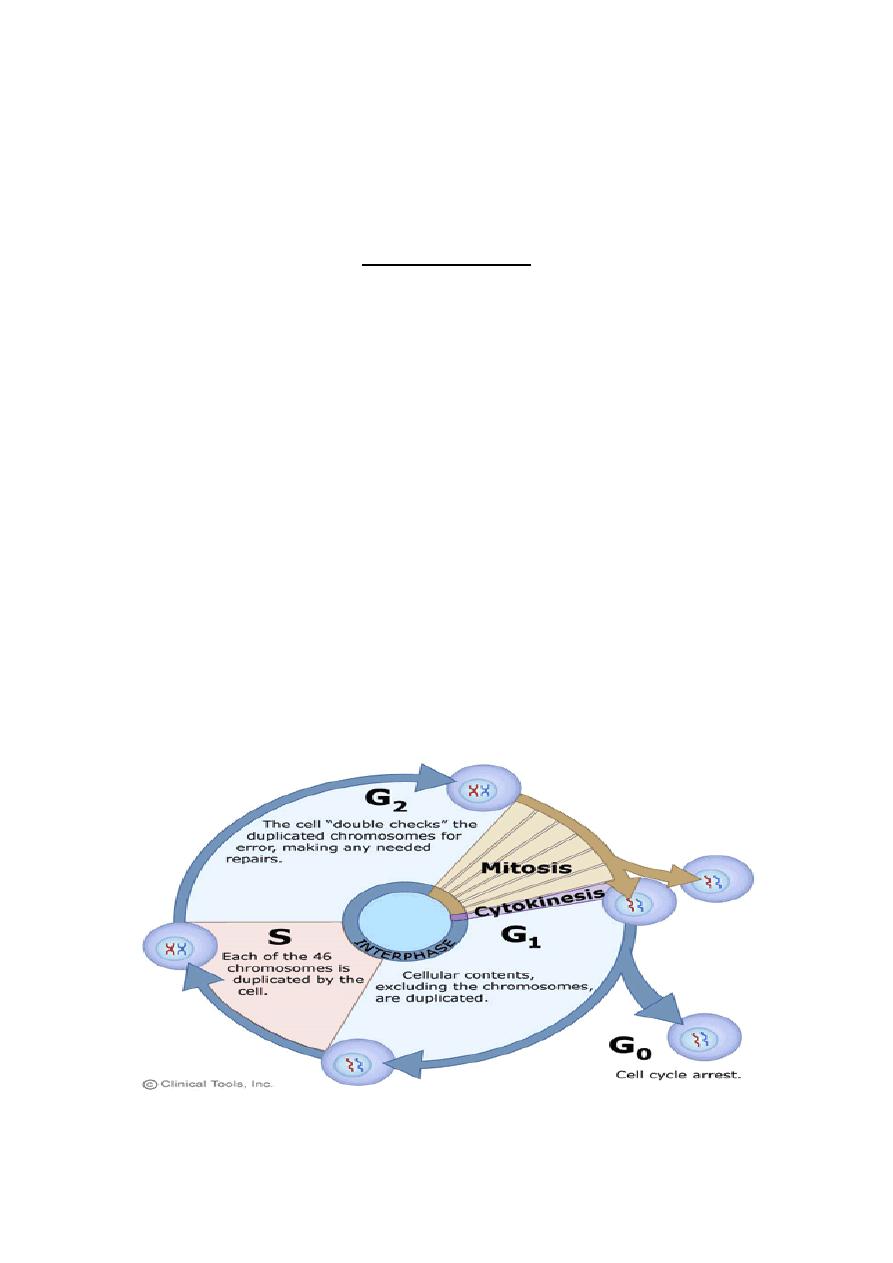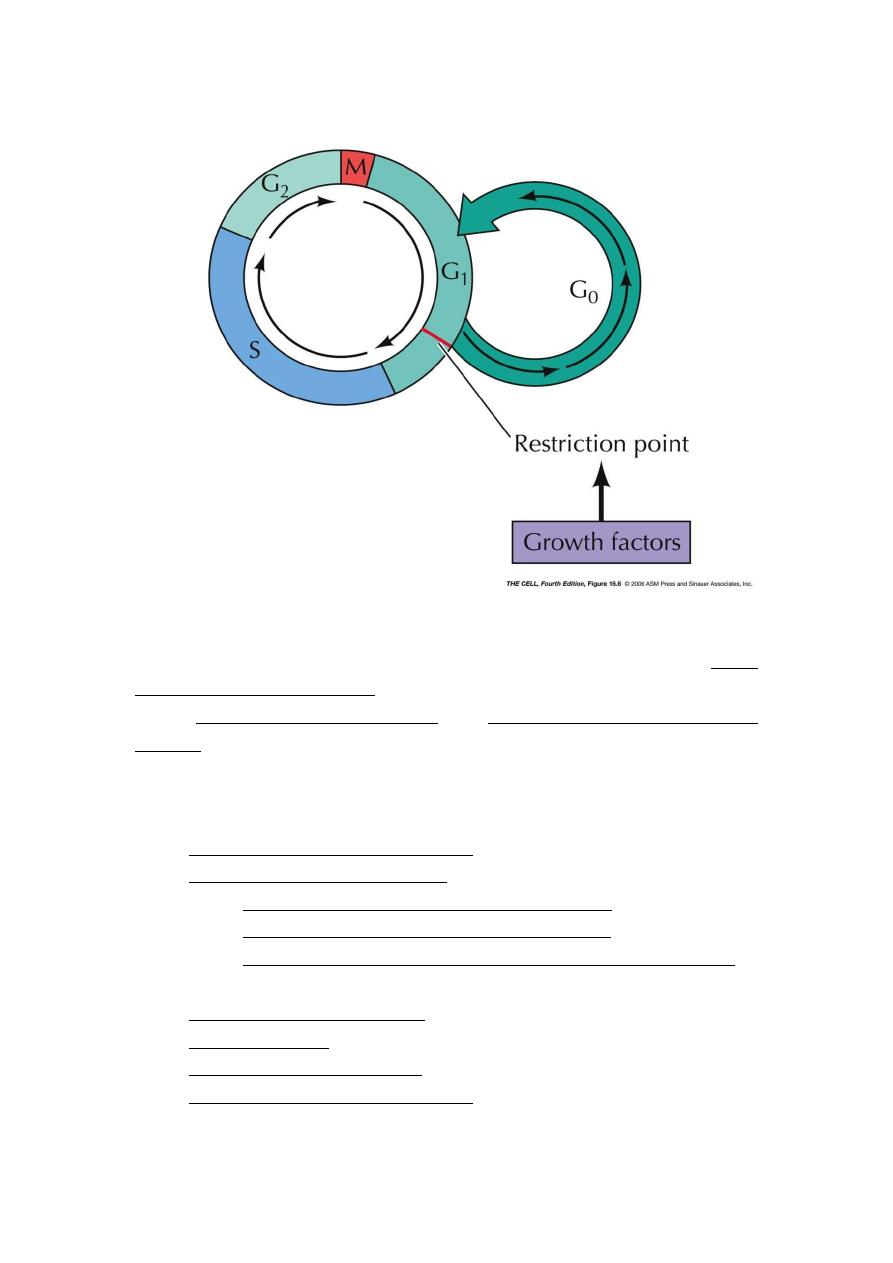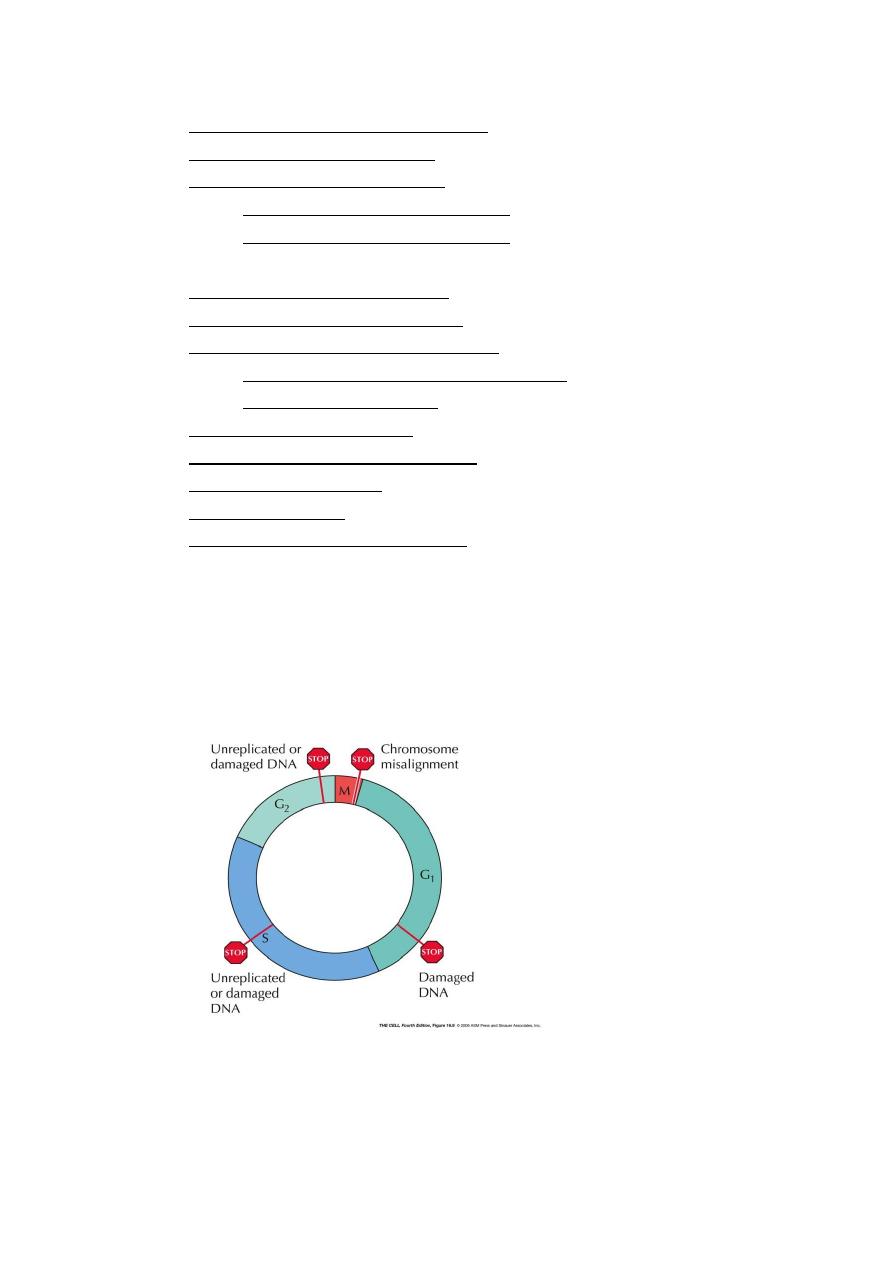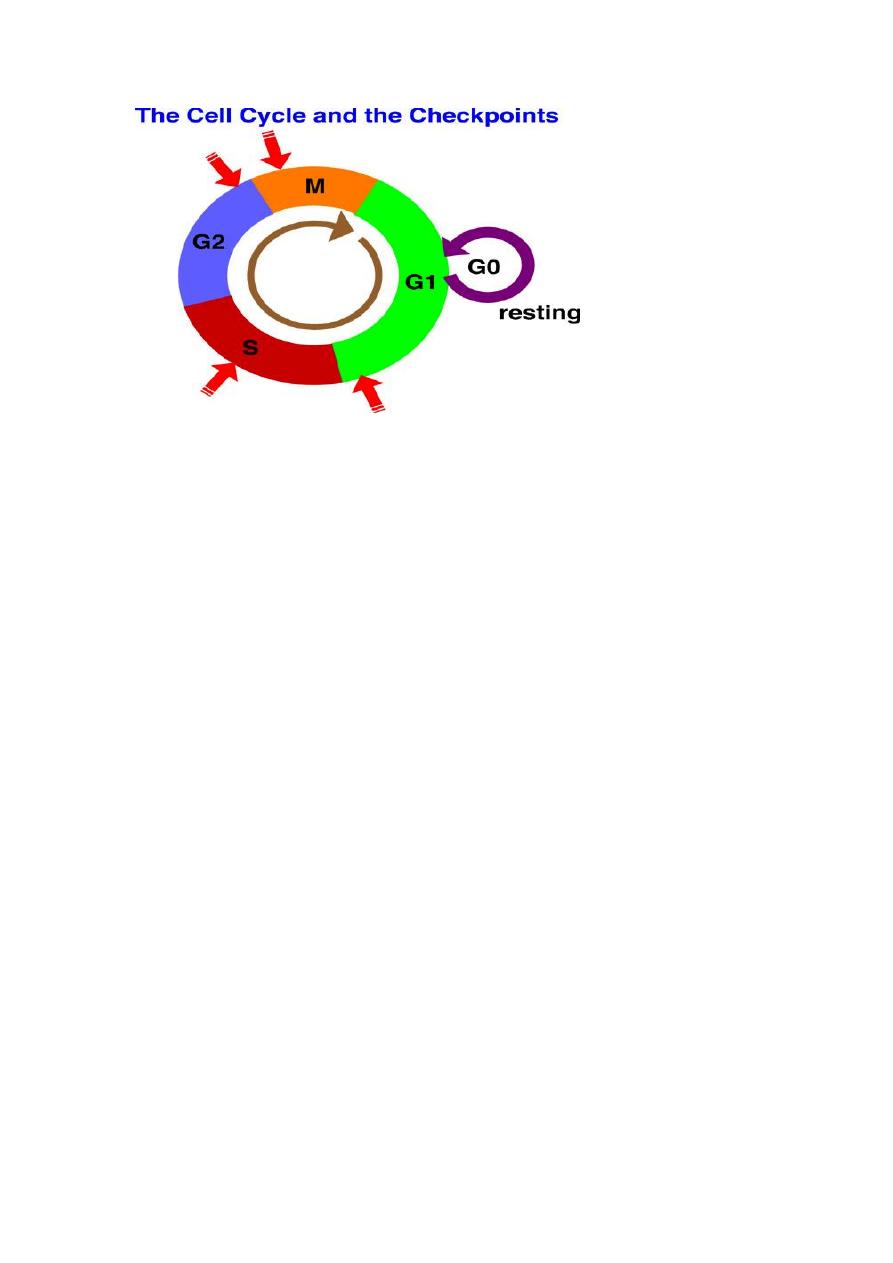
Lec.12 Dr:Buthaina Al-Sabawi
Date:21/12/2016
The Cell Cycle
The cell cycle, is the series of events that leads to duplication
and division of a cell.
Division cycle consists of 4 coordinated processes:(1) cell
growth,(2) DNA replication, (3)distribution of the duplicated
chromosomes ,(4) cell division.
The alternation between mitosis and interphase called cell
cycle.
Cell cycle divided into 2 stages, (Mitosis and interphase).
Mitosis(4 stages)
(1)Prophase
(2) Metaphase
(3) Anaphase
(4) Telophase
(1)

Interphase:
Before a cell can enter cell division, it needs to take in
nutrients. All of the preparations are done during interphase.
Interphase is a series of changes that takes place in a newly
formed cell and its nucleus, before it becomes capable of
division again. It is also called preparatory phase or intermitosis.
Previously it was called resting stage because there is no
apparent activity related to cell division. Typically interphase
lasts for at least 90% of the total time required for the cell cycle.
Interphase, is itself divided into three phases
(1). G1 (Growth phase)
(2). S (DNA synthesis)
(3). G2 (Post DNA duplication)
The cell cycle divided into four periods, G1, S, G2 and mitosis
(M)
G1:(Gap1): The first gap in the normal cell cycle is called G1
and is the period when the necessary proteins for DNA
replication are synthesized. The cell grow in size and the
cellular organelles increase in number (such as mitochondria,
ribosomes), and grows in size, the cell is metabolically active &
continuously grows but does not replicate it’s DNA.
(S): is referred as synthesis phase when DNA synthesis. During
duplication, each chromosome doubles to produce identical
sister chromatids, and also centrioles replicate take place.
G2: (Gap2) is the internal between chromosome duplication and
the beginning of mitosis, during which cell growth continues
and proteins are synthesized in preparation for mitosis.
The duration of the cell cycle phases varies considerably in
different kinds of cells.
(2)

In bone tissue, G
1
lasts 25 h. The S phase (DNA synthesis) lasts about 8
h. The G
2
-plus-mitosis phase lasts 2.5-3 h.
Mitosis is the process by which a eukaryotic cell separates the
chromosomes in its cell nucleus into two identical sets in two
nuclei. During the process of mitosis the pairs of chromosomes
condense and attach to fibers that pull the sister chromatids to
opposite sides of the cell.
Cell cycle activities may be temporarily or permanently
suspended in a G0 phase.
Some cells, such as skin cells, divide continuously throughout
the life of the organism. Other cells, such as skeletal muscle
cells and nerve cells, are arrested in the G1 stage. Cardiac
muscle cells are arrested in the G2-stage.
The division cycle is regulated by extracellular signals from the
environment (nutrient, size of cell, growth factors).
Growth factors: are molecules that attach to the plasma
membrane receptors and thereby bring about cell growth.
Availability of Growth factors controls the animal cell cycle at a point in
the late G1 called the restriction point. If growth factors are not
available during G1, the cells enter in a rest stage of the cycle
(G0).
GF,is a naturally occurring substance capable of stimulating
cellular
proliferation,
healing,
and
differentiation. Usually it is a protein or a steroid hormone.
Growth factors are important for regulating a variety of cellular
processes.
Growth factors typically act as signaling molecules between
cells. Examples are cytokines and hormones that bind to specific
receptors on the surface of their target cells.
(3)

They often promote cell differentiation and maturation, which
varies between growth factors. For example, bone
morphogenetic proteins stimulate bone cell differentiation,
while fibroblast growth factors and vascular endothelial growth
factors stimulate blood vessel differentiation.
Classes of growth factors
There are many families, some of which are listed below:
Bone morphogenetic proteins (BMPs)
o
Macrophage colony-stimulating factor (M-CSF)
o
Granulocyte colony-stimulating factor (G-CSF)
o
Granulocyte macrophage colony-stimulating factor
(GM-CSF)
Epidermal growth factor (EGF)
Erythropoietin (EPO)
Fibroblast growth factor (FGF)
Foetal Bovine Somatotrophin (FBS)
(4)

Growth differentiation factor-9 (GDF9)
Hepatocyte growth factor (HGF)
o
Insulin-like growth factor-1 (IGF-1)
o
Insulin-like growth factor-2 (IGF-2)
Interleukins
Keratinocyte growth factor (KGF)
Migration-stimulating factor (MSF)
Macrophage-stimulating protein (MSP
o
Brain-derived neurotrophic factor (BDNF)
o
Nerve growth factor (NGF)
Placental growth factor (PGF)
Platelet-derived growth factor (PDGF)
T-cell growth factor (TCGF)
Thrombopoietin (TPO)
coordination between different phases of cell cycle is dependent on
a system of checkpoints and feedback controls that prevent entry
into the next phase of the cell cycle until the events of the preceding
phase have been completed. Several cell cycle checkpoints function to
ensure that incomplete or damaged chromosome are not replicated and
passed on to the daughter cells.
(5)

The cell cycle is highly regulated, and checkpoints control
transitions between cell- cycle stages. Checkpoints are
biochemical circuits that detect external or internal problems
and send inhibitory signals to the cell-cycle system.
There are four major types of checkpoints.
The restriction point.
DNA damage checkpoints.
DNA replication checkpoints.
Spindle assembly checkpoints (also called metaphase
checkpoints).
Checkpoint regulation plays an important role in an
organism's development. In sexual reproduction, when egg
fertilization occurs, when the sperm binds to the egg, it releases
signaling factors that notify the egg that it has been fertilized.
Among other things, this induces the now fertilized oocyte to
return from its previously dormant, G
0
, state back into the cell
cycle and on to mitotic replication and division.
(6)
